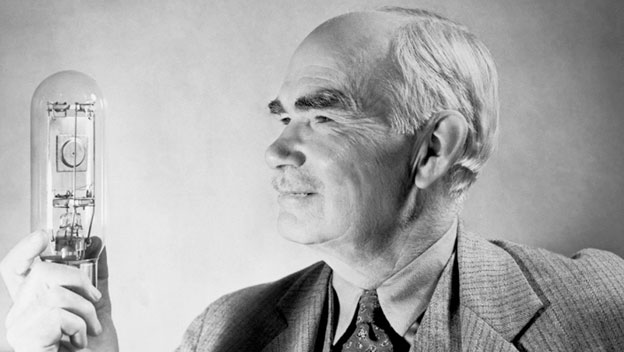It was thanks to him that electronics became an industry: Who is Lee De Forest?
Lee de Forest is an American inventor who holds over 180 patents. De Forest, who developed the radio, described his invention with the words "I discovered an Invisible Sky Empire. Abstract, but as solid as granite".

American inventor and electrical engineer Lee De Forest invented the Audion, a vacuum tube that receives and amplifies weak electrical signals. This device was used in many fields from radios to televisions and the first computers.
Early Period and Education
Lee De Forest was born on August 26, 1873, in Council Bluffs, Lowa. His father is Henry Swift DeForest and his mother is Anna Robbins. His father was pastor and president of the Congregational Church of Talladega College, an all-black school in Alabama. Although his father hoped his son would choose the same career path, De Forest had different plans.
Lee de Forest (August 26, 1873 – June 30, 1961) was an American inventor and a fundamentally important early pioneer in electronics. He invented the first practical electronic amplifier, the three-element "Audion" triode vacuum tube in 1906. This started the Electronic Age, and enabled the development of the electronic oscillator. These made radio broadcasting and long distance telephone lines possible, and led to the development of talking motion pictures, among countless other applications.
De Forest completed his education at the Mount Hermon School and then enrolled at Yale University's Sheffield Scientific School in Connecticut. He completed his education here and received his doctorate in 1899 with a thesis on radio waves.
Career and Achievements
After graduating, De Forest got a job at Western Electric and developed dynamos, telephone equipment, and early radio equipment. In 1902 he founded his own business, the De Forest Wireless Telegraph Company, selling radio equipment and promoting the new technology by broadcasting Morse code signals. Shortly after, however, De Forest was removed from the management of his own company.
De Forest was extremely creative and active, but many times he had trouble seeing the potential of his inventions or grasping the theoretical implications. While developing wireless telegraph equipment, John Ambrose replaced the vacuum tube Fleming had invented and designed a vacuum tube in 1906, which he named Audion. This tube contained filament and plate, similar to conventional vacuum tubes, but with a grid between the filament and plate. This grid amplifies the current flowing through the tube, amplifying weak telegraph and even radio signals. De Forest thought gas was an essential part of the system, but in 1912 others showed that a triode in a complete vacuum would work better.
In 1913, the United States Department of Justice sued De Forest on behalf of shareholders on fraud charges, declaring that the promise of rebirth was an "absurd" promise (later acquitted).
In 1916, the American inventor achieved two feats. These were the first radio advertisements for their products and the first presidential election reported on the radio.
In 1919 De Forest applied for his first patent on the "De Forest Phonofilm" process, a process that records sound directly on film. The process developed the work of Finnish inventor Eric Tigerstedt and German partnership Tri-Ergon and involved recording sound on film as parallel lines with varying gray tones.
Death
Lee De Forest died on July 1, 1961, in Hollywood at the age of 87 and was interred at the San Fernando Mission Cemetery in Los Angeles, California. He died in financial difficulties as he had only $1,250 in his bank account at the time of his death.
